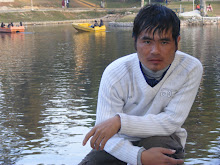Criticism of liberation theology began immediately after the 1968 Medellín conference. The movement was growing rapidly, but conservative forces within the Latin American church tried to stem the tide. More traditional Catholic thinkers accused it of being unduly dependent on Marxism and of emphasizing the “horizontal at the expense of the vertical”; increasingly, Vatican
Meanwhile, liberal theologians, both Catholic and Protestant, accused the movement of ideological bias and thin scholarship. Feminists, blacks, and some indigenous leaders criticized it for emphasizing economic forms of oppression at the expense of gender, racial, and ethnic discrimination. The liberation theologians themselves responded vigorously to these criticisms, wrote hundreds of books and articles, and made liberation theology one of the most provocative and original progressive movements of the second half of the century.
When the bishops’ council of Latin America convened for its Third General Conference in 1979 in Puebla , Mexico
However, the opposition mounted by military regimes and paramilitary death squads was more crushing. Authoritarian governments feared the critical ideas of liberation theology and the activism of the base communities, especially after the Nicaraguan Sandinistas, who were directly influenced by liberation theology, successfully overthrew their country’s dictatorship in 1979. Priests, nuns, and catechists were arrested, tortured, and murdered throughout Latin America . The most vicious repression occurred in El Salvador El Salvador El Salvador Jesuit-run Central American University
In 1984, meanwhile, the antagonism between the Vatican Vatican ’s official guardian of orthodoxy, summoned Boff to Rome Vatican Vatican
In March 1986 the Vatican
Other factors reshaped liberation theology as well. The replacement of military regimes by civilian governments in Latin America meant that community churches were no longer the sole bases for opposition. Unions, universities, political parties, and social movements began to play that role as well. In addition, criticisms by Latin American feminist theologians such as Ivone Gebara in Brazil Protestant Church in Latin America and the Caribbean ). Meanwhile, the Vatican
At the same time, however, liberation theology began to flourish in other regions of the world and in other religions. Books and articles developing Jewish, Buddhist, and Muslim liberation theologies appeared. In South Korea United States South Africa were also inspired in part by the movement, and a specifically black South African school of biblical interpretation has emerged in scholarly works such as Itumeleng J. Mosala’s Biblical Hermeneutics and Black Theology in South Africa Vatican
In Latin America and the Caribbean , some observers have suggested that liberation theology is in decline. Another, and perhaps more accurate, view is that it is going through a period of transition, enlarging and refining its perspectives and continuing to influence similar movements in many parts of the world.





No comments:
Post a Comment